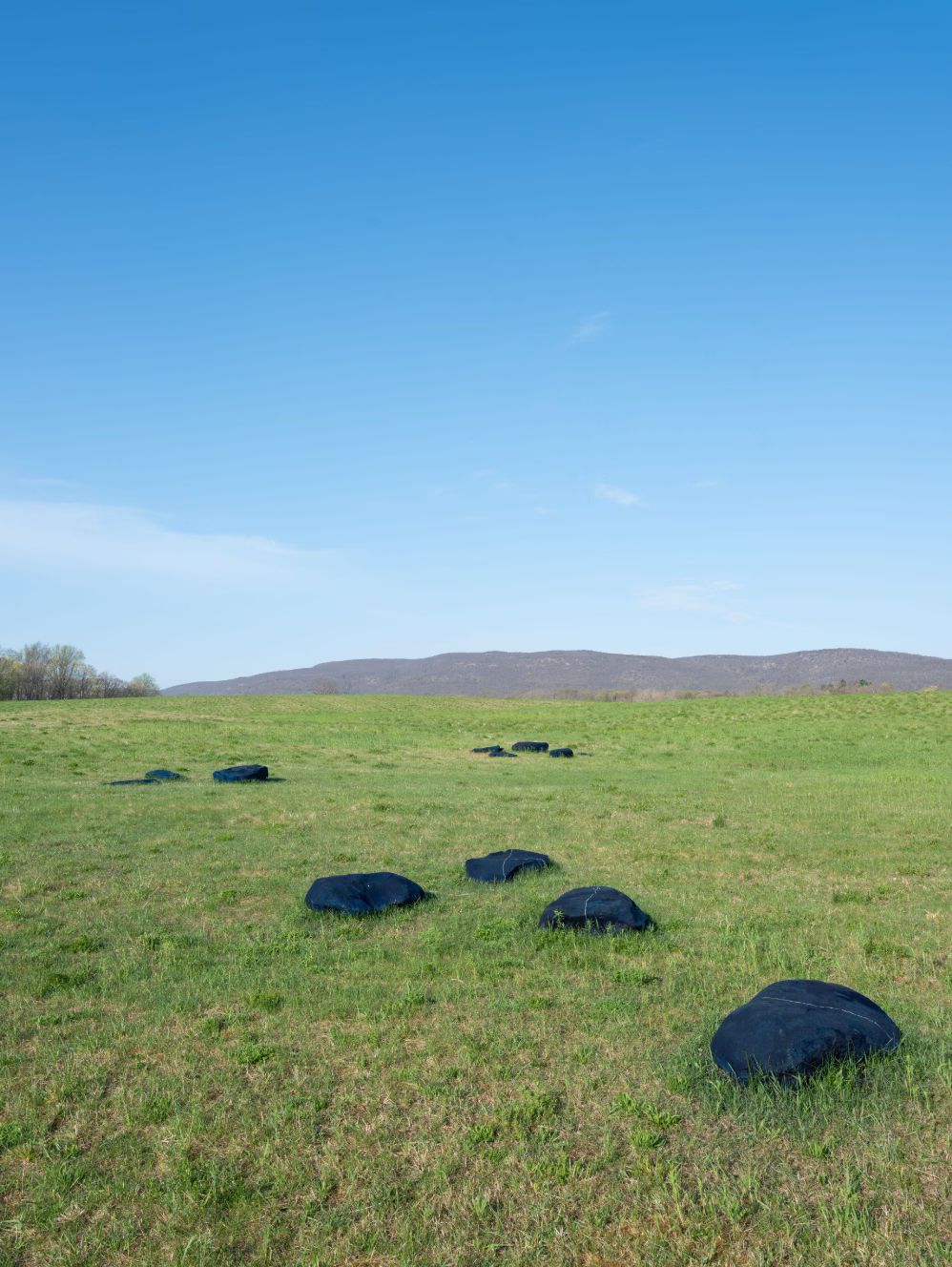
Dionne Lee, between the falling leaf and the surface of rock (detail), 2025. Image courtesy of the artist and P.Bibeau, NY. Installation view at Storm King Art Center, Mountainville, NY. Photography by Jeffrey Jenkins.
“I wonder if I'm making land art now?” Dionne Lee asks as we stand next to her installation at Storm King Art Center in New Windsor, New York. A group of stones transfigured into photographic plates by way of cyanotype are placed onto an expansive field of grass south of the museum’s 500-acre campus. It is nearing dawn on a cold day in early spring, and Lee, in a purple puffer and cargo pants, is pensively walking around her installation, observing weather conditions, and eagerly anticipating the surfacing of new images.
“If Eric [Booker] did not extend the invitation, I would not imagine myself making sculptures like these,” she says, referring to Storm King’s associate curator, while we look at how the stones, handpicked from Storm King’s landscape, have changed. The moderate-sized, cyanotype-coated rocks have gained differing shades and patterns of blue from the sun’s U.V. rays—and sometimes the artist washes away excess layers of the solution with a hose.
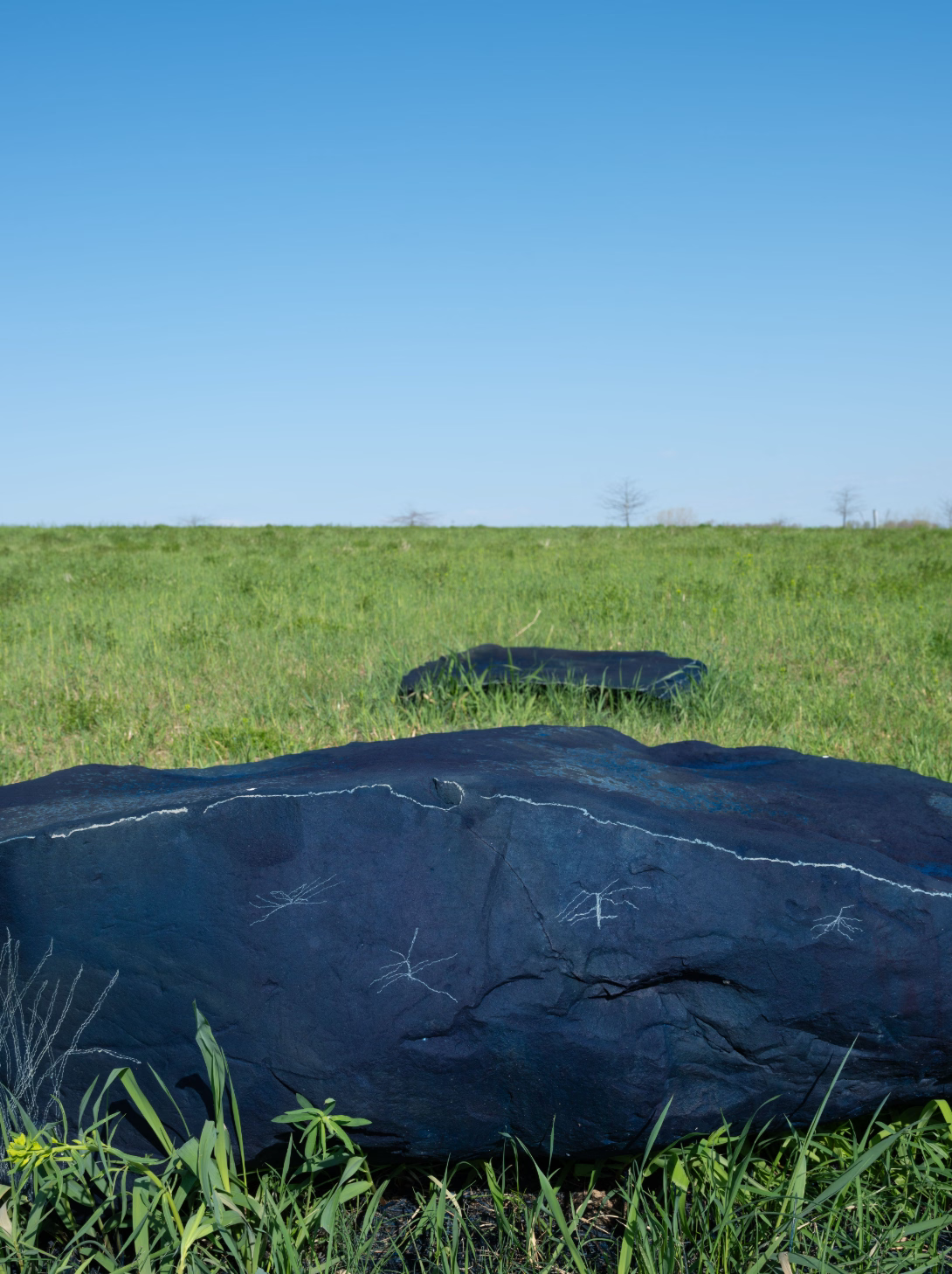
Dione Lee, between the falling leaf and the surface of rock (detail), 2025. Photography by Jeffrey Jenkins.
Neither of us knows what exactly will happen as the rocks remain in natural light. Artistic control is only possible during the period of applying the formula. After that, the stones freely adapt to environmental conditions, which are pure chance and accident. The patterns that develop conjure further mystery, evoking cosmology, topography, or petroglyphs—some have imprints of the artist’s hand, while others have striking shapes and figures made from spreads of lichen or invisible cracks. Lee muses that plant fossils are the first landscape photographs: The stones similarly will document the passage of seasons from May to November.
Lee’s current conceptual concerns are firmly rooted in her experience of navigating multiple geographies as a young adult. Born in Harlem, the artist’s understanding of nature was obscured by the built environment of Manhattan. It was not until a decade ago, when she moved to Oakland for graduate school, that the ever-shifting terrain and open California sky reignited her appreciation for the natural world, especially the horizon line. Researching the early history of landscape photography in America, Lee realized that these photographs’ wide angles and distant views, while romantic, served the violent project of land acquisition: They erased traces of Indigenous inhabitants and created an illusion that the American West was unoccupied, ripe for commodification. In response, she produced black-and-white close-ups of the ground, without a horizon line. This embodied act of gazing downward and photographing the land formed an intimate bond between Lee and the earth, a gesture toward emotional truths only accessible through physical closeness.
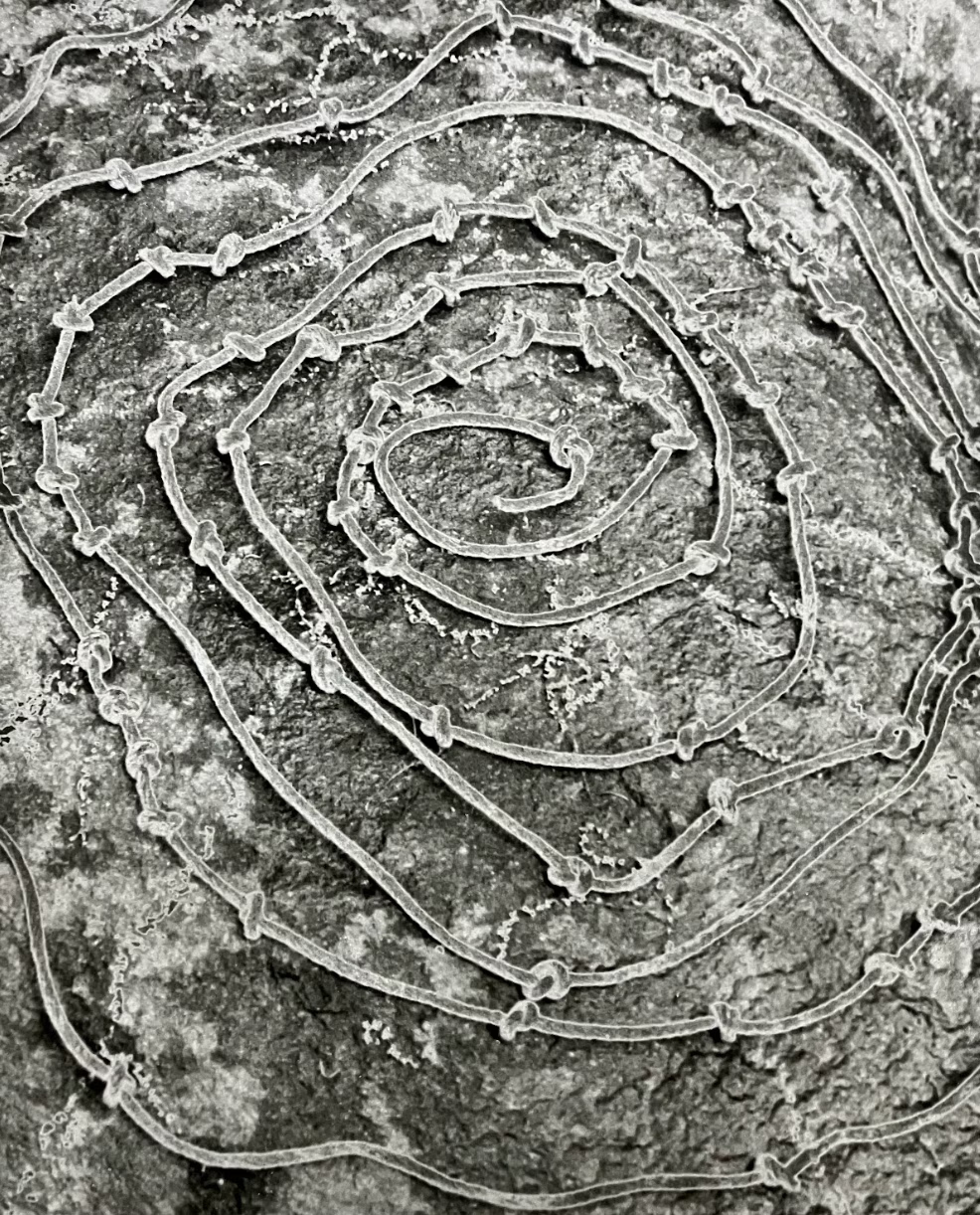
Dionne Lee, Untitled Rock Drawing VI, 2024. Image courtesy of the artist and P.Bibeau.
The artist’s landscape photographs led her to desire to create three-dimensional works close to the ground. Upstate, she purposely displays her rocks horizontally rather than vertically. The sculptures are no more than knee high, lying alongside the native vegetation. Visitors must scan downward to see; in these instances, the context of an image and the history of a place become one.
Lee’s engagement with land art can be traced back to the fragmented body that frequently appears in her photographs and videos. Like landscape photography, land art has also been defined by white, male practitioners declaring the dominion of human intellect over nature. But what is lost, she reveals, is the mutual dependency between the body and the environment. Last year at Lee’s solo show “Currents,” at the San Francisco exhibition space Cushion Works, silver gelatin photographs of water droplets placed in spirals on rocks index the presence of the artist’s hands while a video of spinning shadows made from Lee holding a dowsing rod signifies the extension of her body. These works appropriate conventions of land art and implicate the documentation of natural sites as dependent on a laboring body, performative, and semi-private.
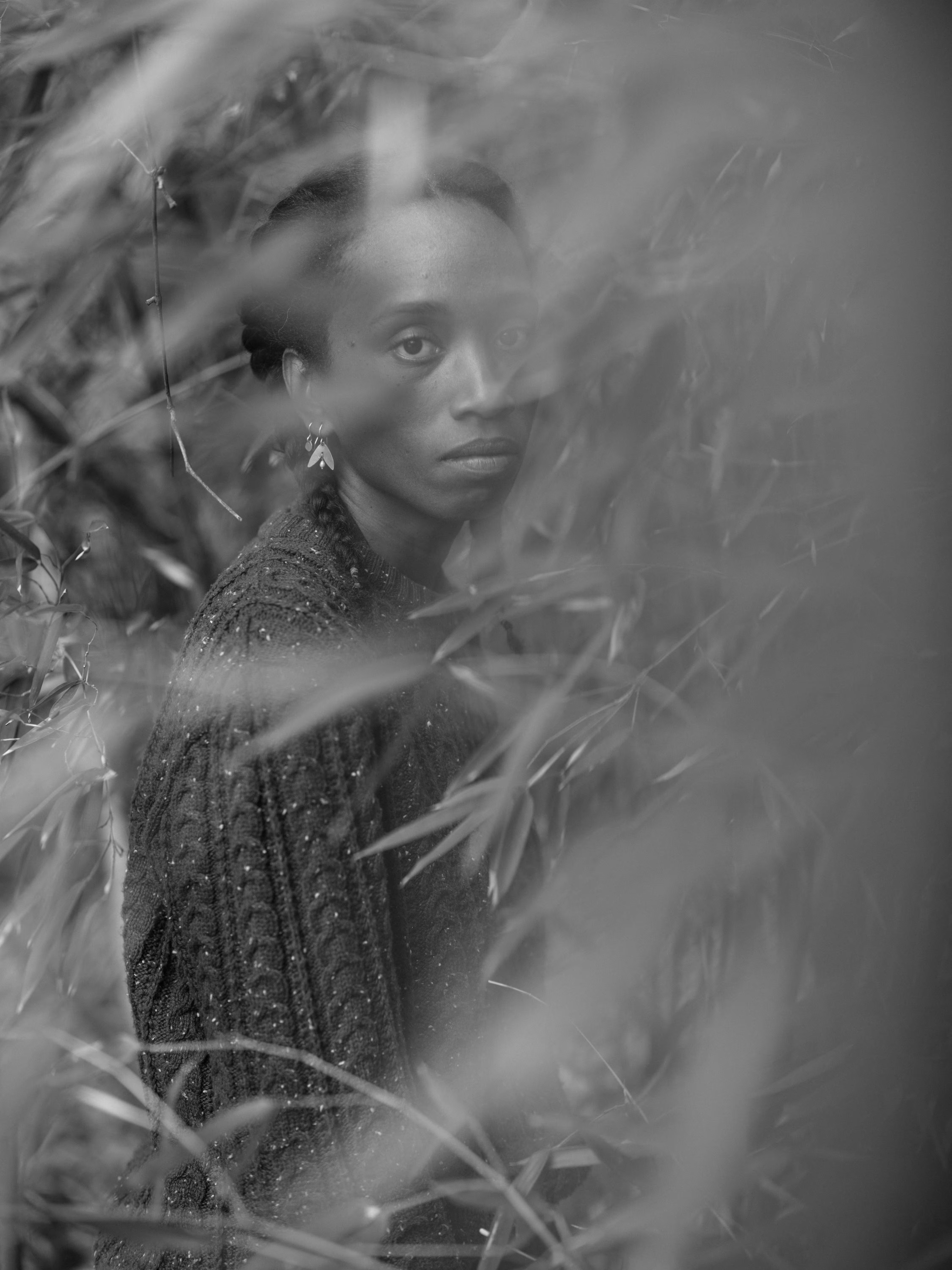
Image courtesy of the artist and P.Bibeau. Photography by Matthew Pevear.
As planetary thinking—theorizing the complexity of human-nature entanglements—begins to populate discourses of contemporary art, Lee’s cyanotype stones are poetic narrators. These physical interpretations of her precise yet moving command of photography are a welcome shakeup at the upstate institution known for supporting artists working in the tradition of monumental sculptures.
In the end of November, Lee will return her installation to nature. She outlines her plan to flip the images upside down—having weathered Storm King’s environmental conditions, they will become part of the soil. For now, visitors can walk up and down the lawn and around the rocks and delight in the immediate beauty. But Lee is already looking ahead. “This is a new way of working,” she professes without hesitation.
Dionne Lee's exhibition, "Outlooks," will be on view at Storm King Arts Center from May 7th to November 10, 2025 at 1 Museum Rd, Windsor, NY 12553.










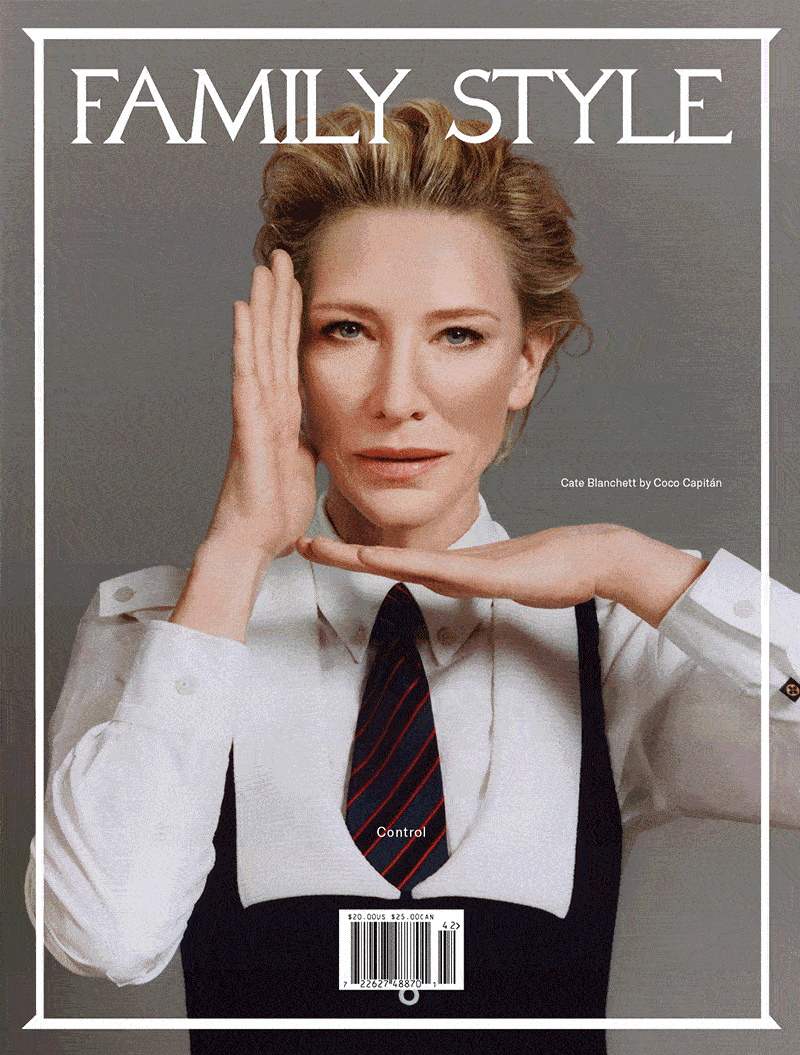



.avif)
